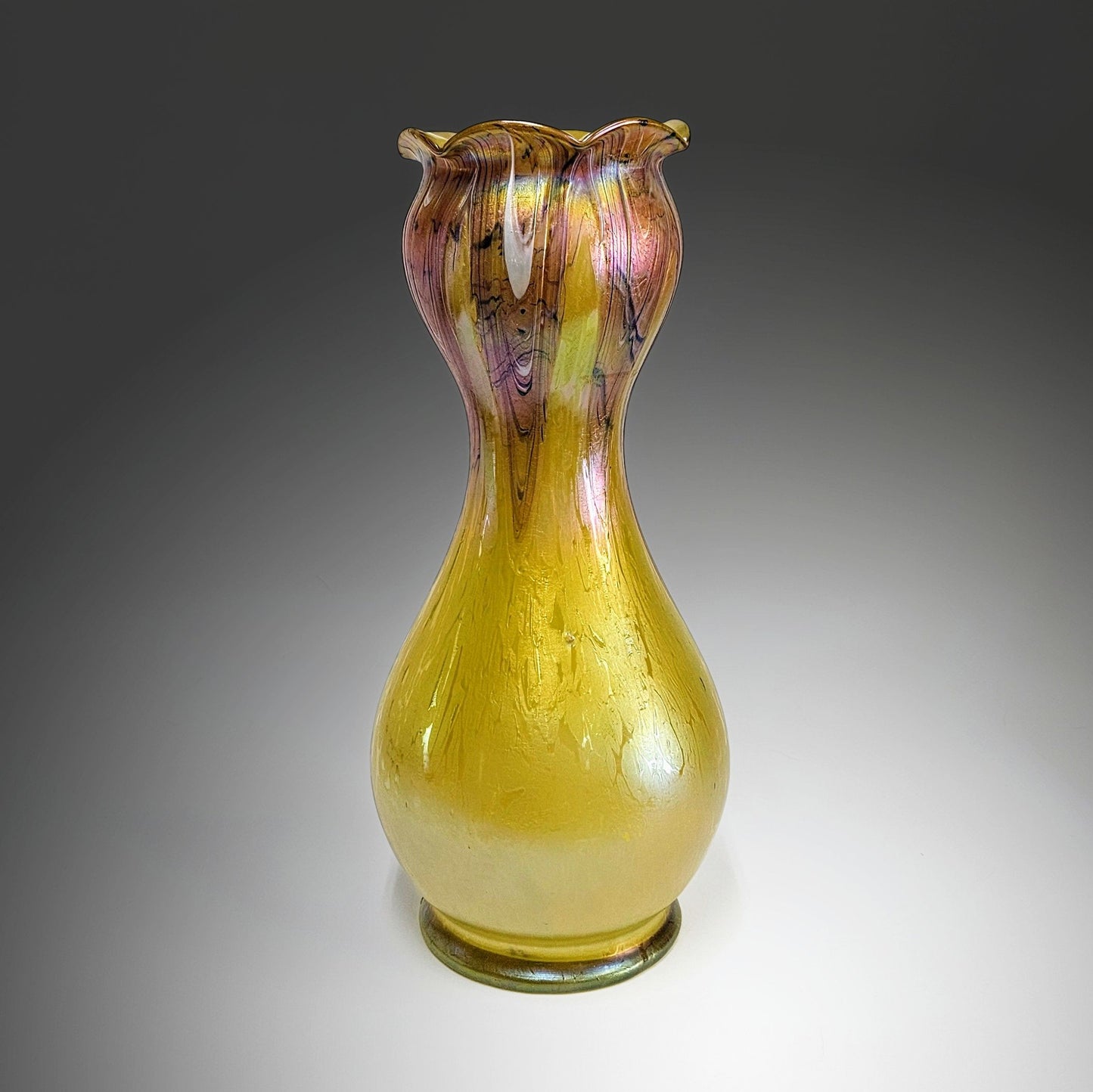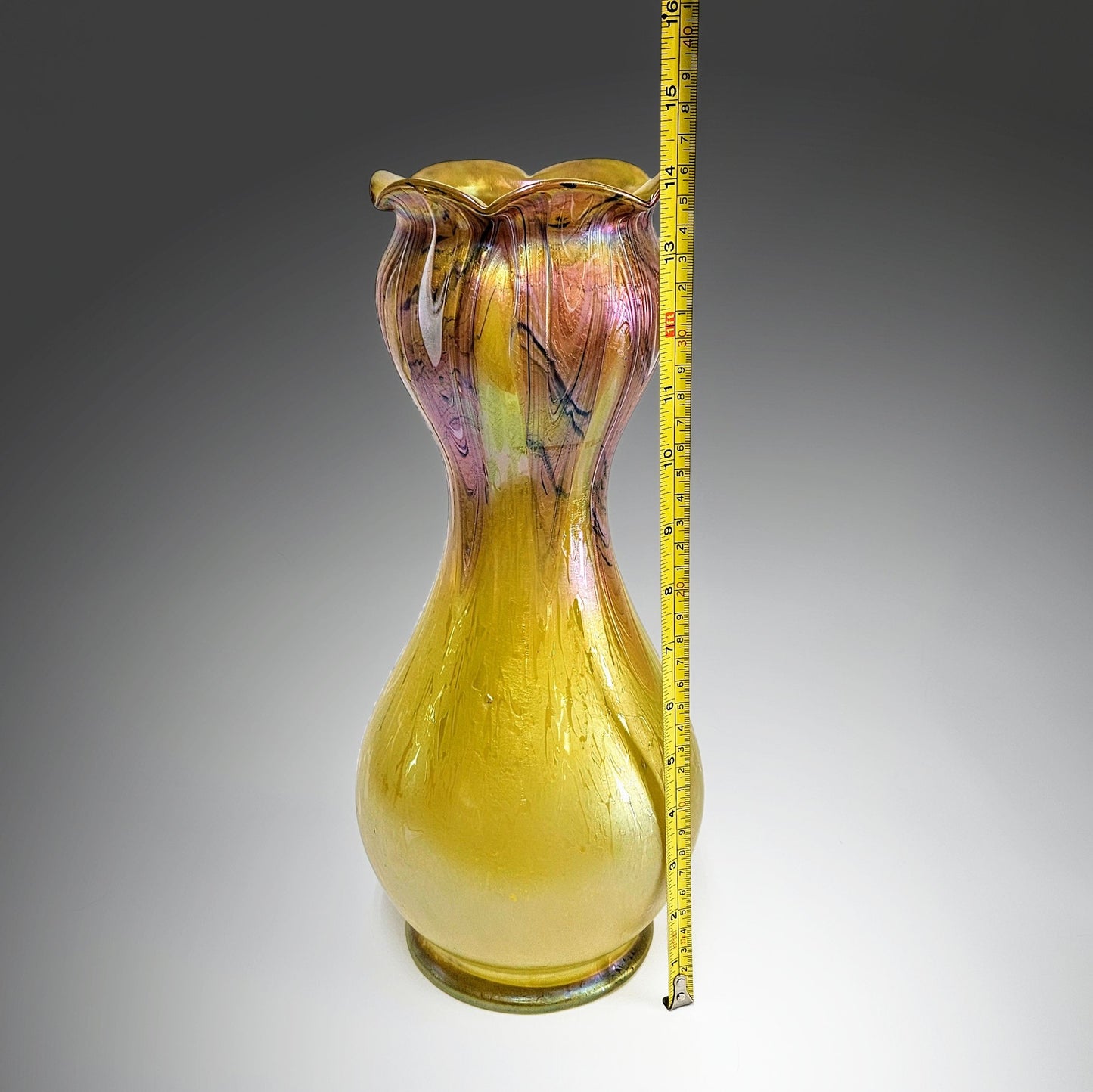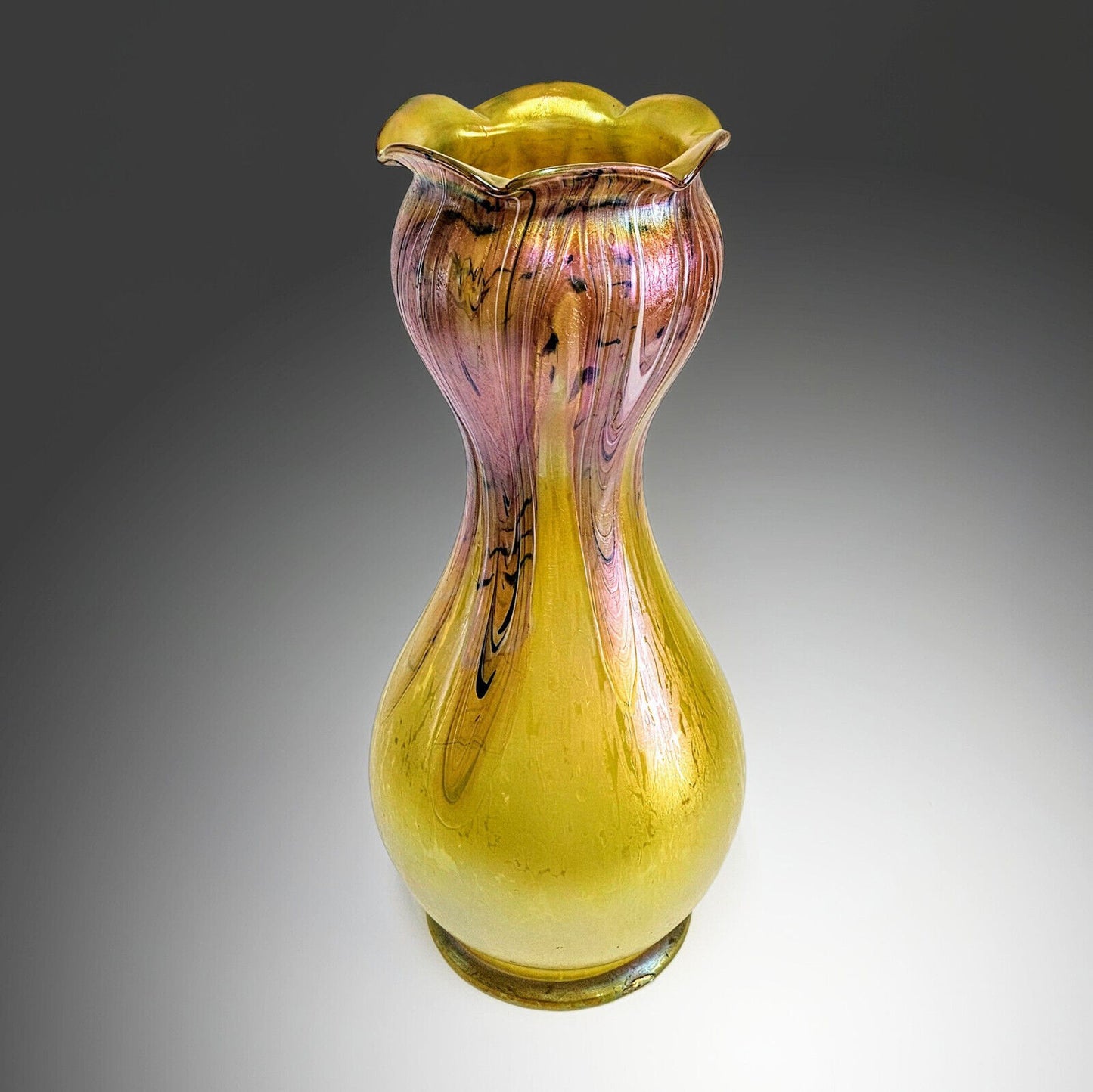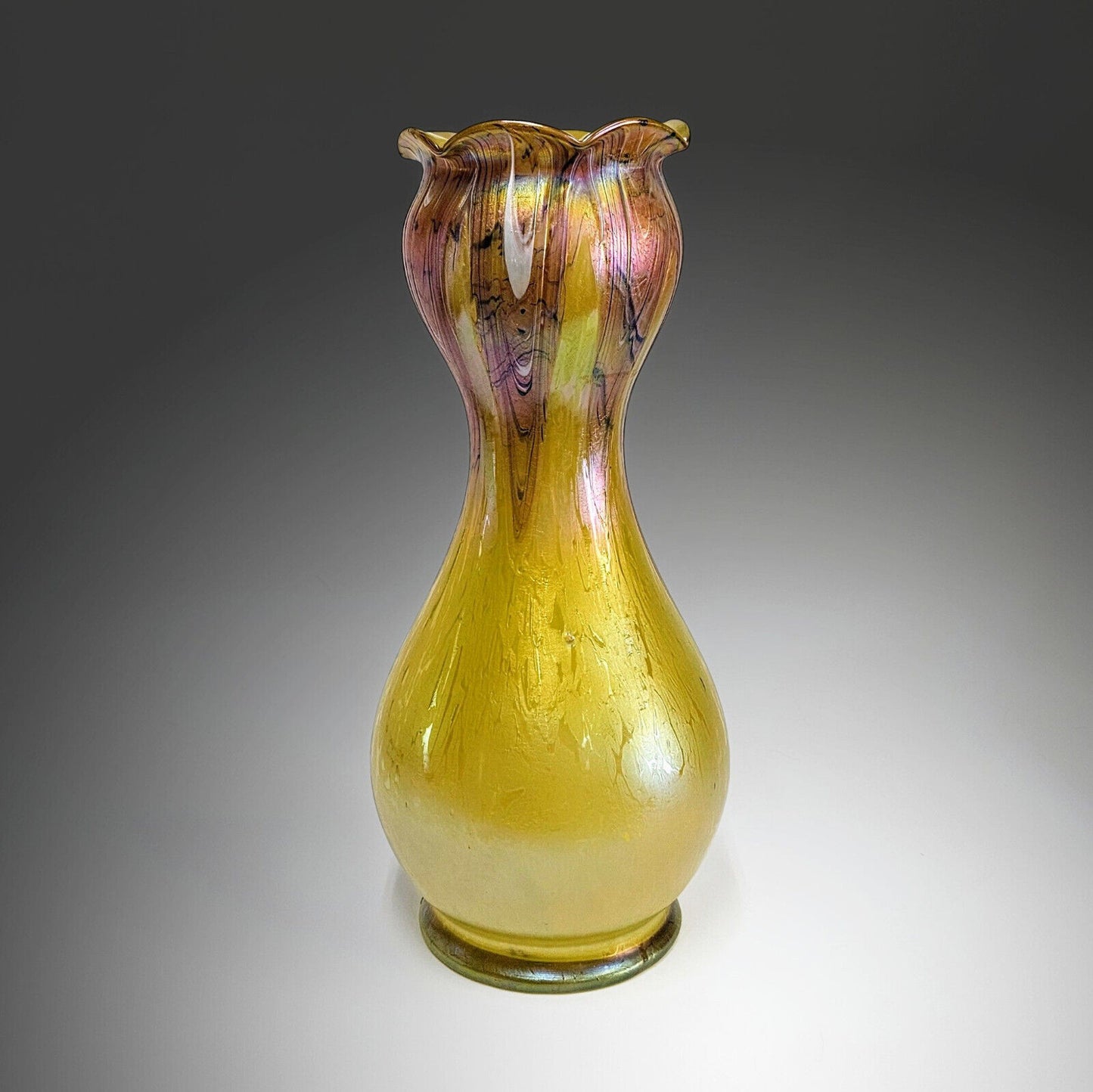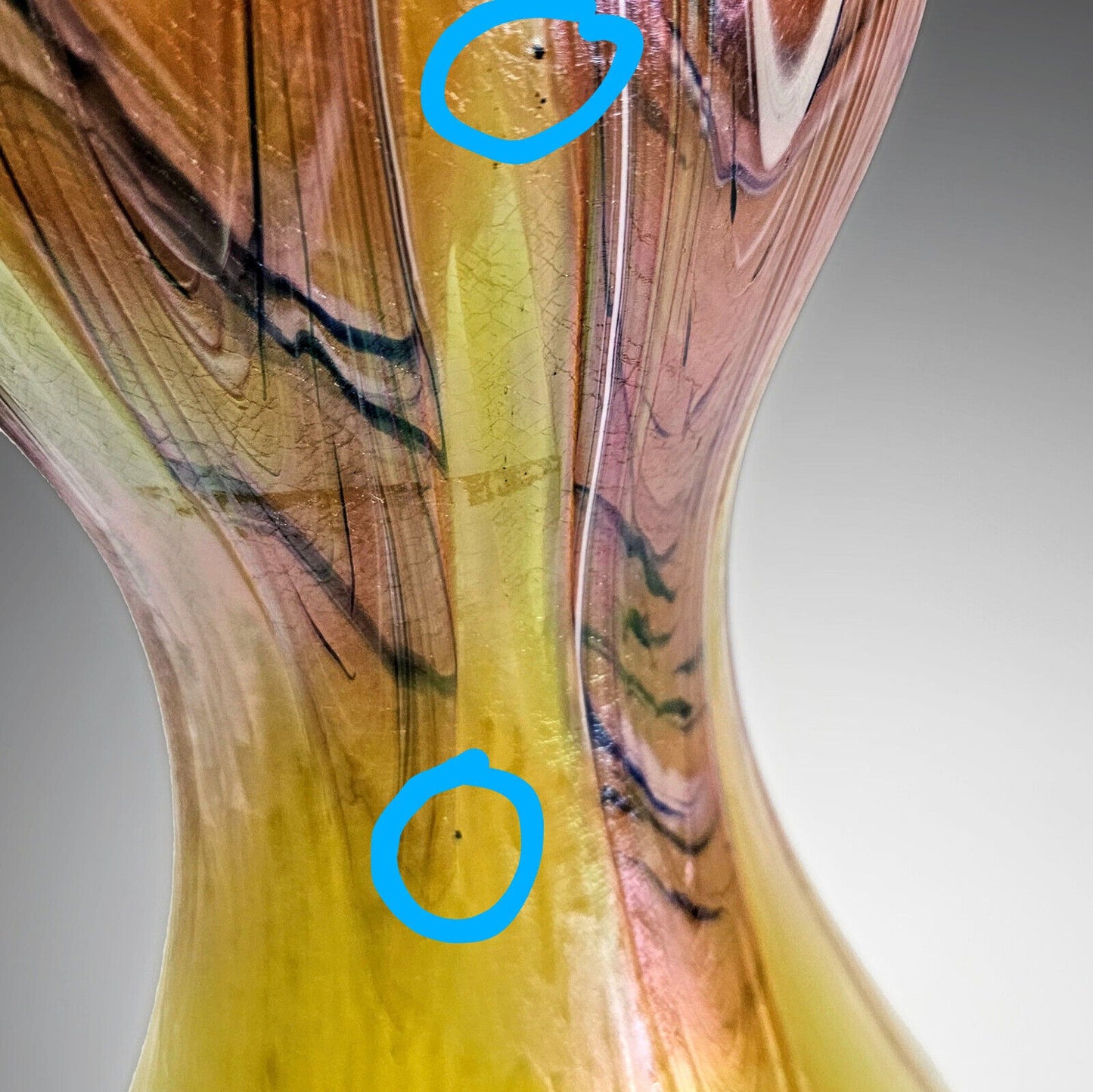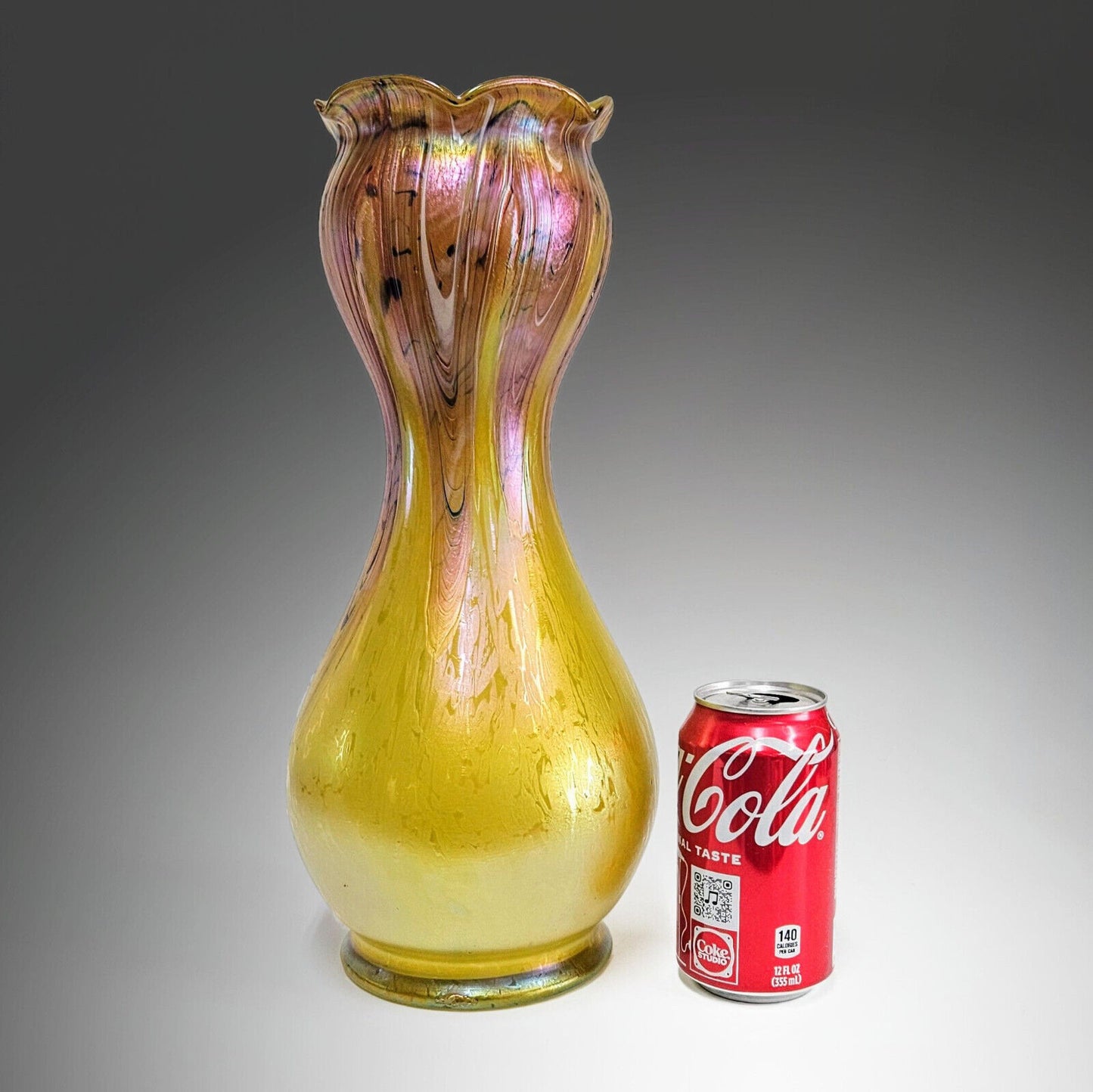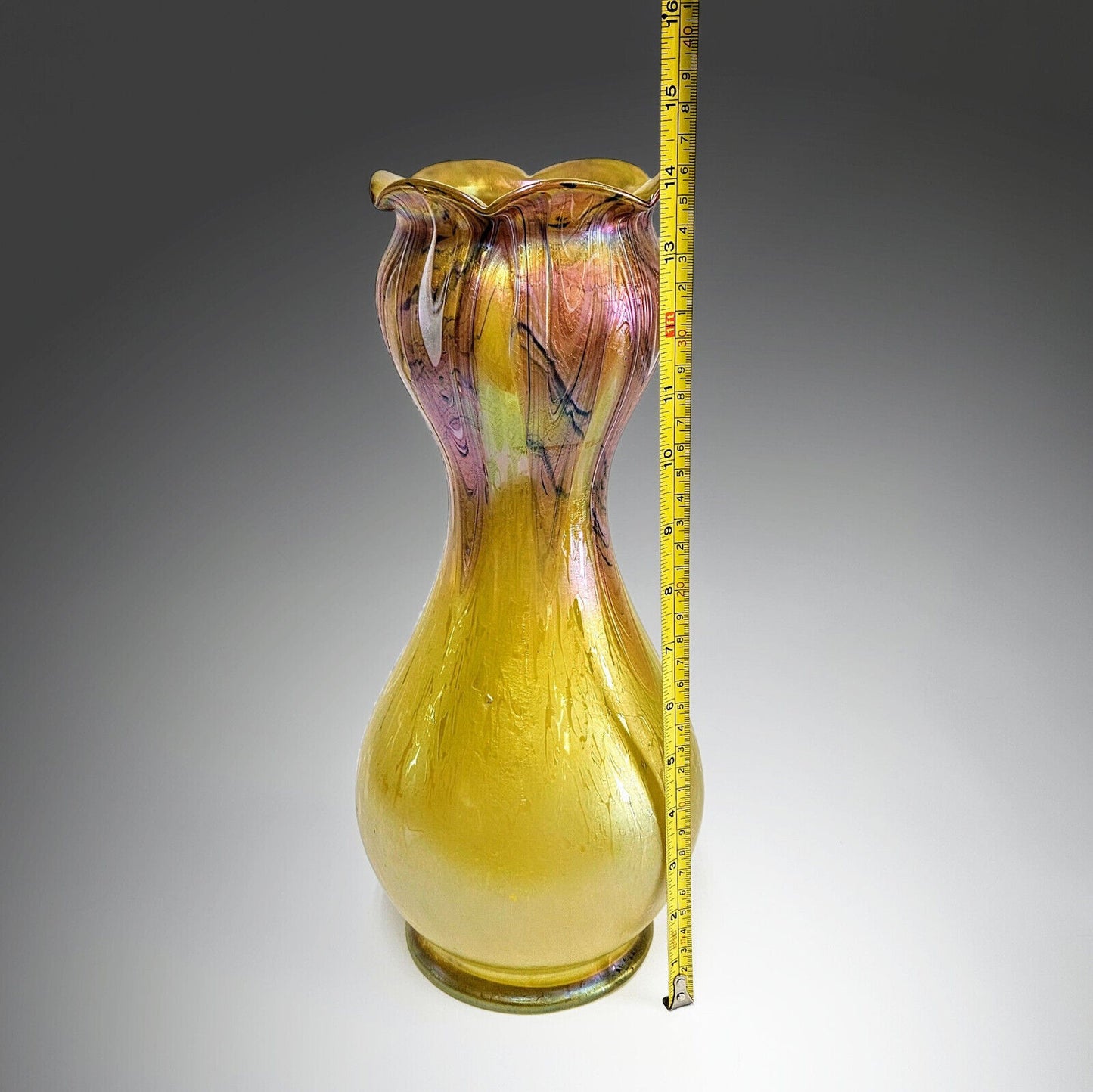Antique Josef Rindskopf Art Nouveau Vase | Circa 1890 | Bohemian Iridescent
Antique Josef Rindskopf Art Nouveau Vase | Circa 1890 | Bohemian Iridescent
Couldn't load pickup availability
The development of the northern coal basin attracted numerous heat-dependent industries, including glassmaking. In 1891, Josef Rindskopf established Josefhütte in Kostanay-Tlic, producing baroque glass that was later refined in Polevsko.
Josef's four childrenâAlbert, Edwin, Sidney, and Shermanâexpanded the family business by acquiring a glasshouse in Duchov, which they renamed "Fanny." Around this time, the family also changed their surname from Rindskopf to Riethof. In 1900, they further expanded by adding Barbarahütte in Mstisov, a glassworks renowned for its production of iridized glass during the Art Nouveau period. Barbarahütte, employing 120 workers, produced exquisite glass known by names such as Granada, Alhambra, and Pepita. However, its most prized creation was Diluvium glass, which mimicked the appearance of marble. These pieces were often partially smooth, with the rest cut and engraved in high relief, making them highly coveted by collectors.
Like many Bohemian glass companies, the Rindskopf firm suffered severe losses during World War I. In 1920, it became a public corporation, shifting focus to pressed glass production. Despite their efforts, the company was declared bankrupt in September 1927.
Share





